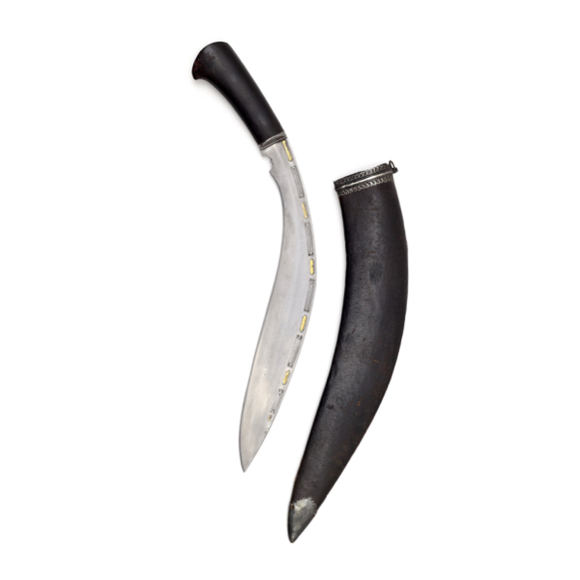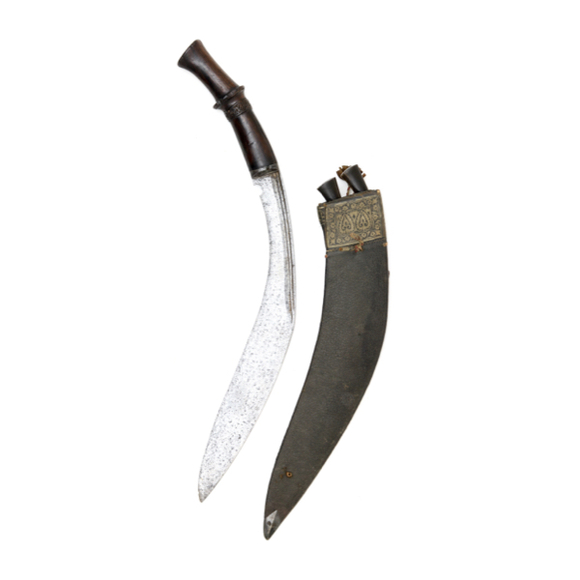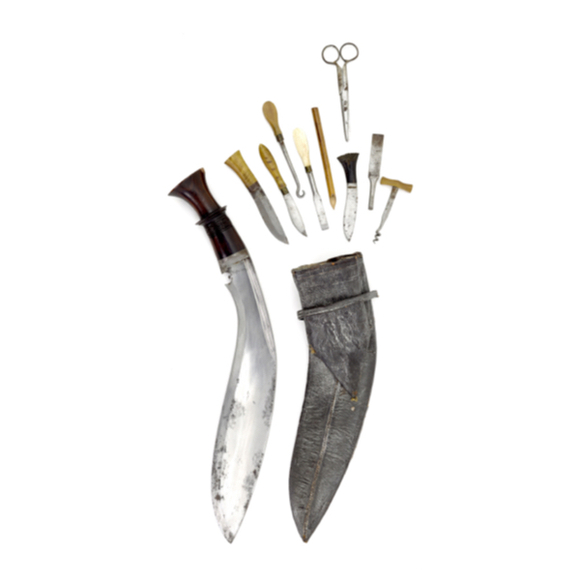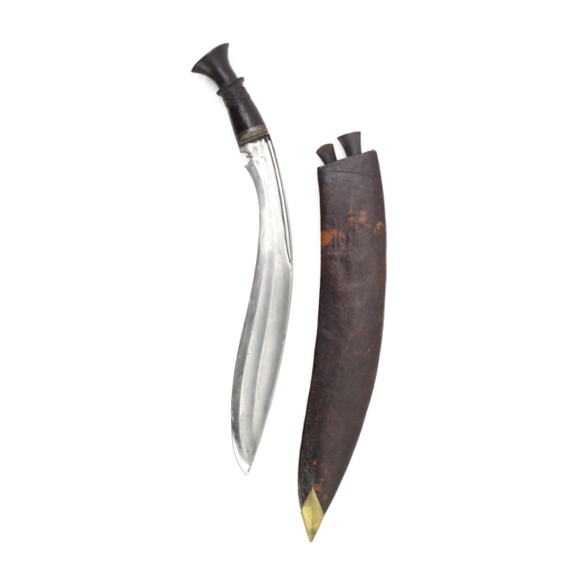Russet iron, one-piece construction with decorative grooves.

Sheathed 96 cm
Saber 94.5 cm
78.2 cm
Base 5.5 mm
Middle 5 mm
5 cm from tip 2 mm
Base 33 mm
Middle 33 mm
5 cm from tip 23 mm
Saber 612 grams
14 cm from hilt
Iron, steel, wood, silver, niello, canvas, wax, leather
Dagestan, Caucasus
Marked 1912
From a Scandinavian private collection
Introduction
The shashka is a guardless single-edged saber that probably originated in the Caucasus around the early 18th century. It was subsequently adopted by the cossacks and the Russian military as well.
This example
A nice Caucasian shashka, exhibiting Dagestani workmanship.
The blade has two wide, single grooves at the base, the upper grooves split into two about one-third up the blade. This groove configuration is also seen on some Polish sabers and, curiously, also in Vietnam. The surface within the grooves is left rough.
The hilt, of typical form, is made of silver with engraved decoration and inlays of niello.
The scabbard is made of wood and covered with waxed fabric. It is mounted with a set of silver mounts inlaid with niello decoration, matching the hilt. The scabbard still retains its suspension straps, each with its own silver niello hook.
Romanov monogram
The pommel is adorned with the monogram of Nicholas II or Nikolai II Alexandrovich Romanov, last Emperor of Russia, King of Congress Poland and Grand Duke of Finland. He ruled from 1894 until he was forced to abdicate the throne on March 15, 1917. He was executed by the Bolsheviks on 17 July 1918.

Markings
A name and date is inscribed on the scabbard mouthpiece.

On the top are the initials:
"A M"

Perpendicular to the initials is in Russian a name and date:
"Melnikovy
1912"
Condition
Some now stabilized corrosion to the blade and some damage to the scabbard wood and fabric. Complete, though, and with all mounts in good condition.

















With a very fine Nepalese blade, but kard-like hilt and scabbard.
Early type with very shallow notch in the blade and little flare in the pommel.
20th century military khukurī with many different tools in its back pocket.






